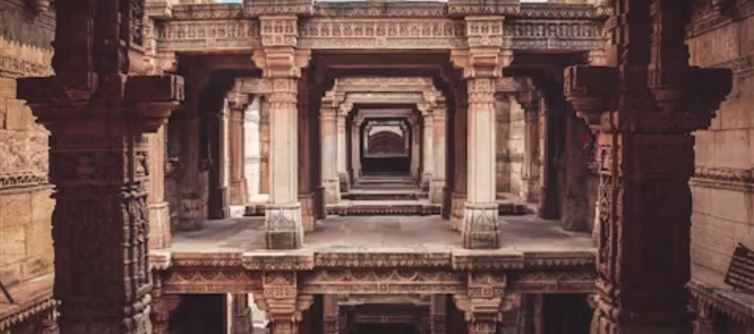
Why Stepwells? Why Now?
Temples are visible to you. Falls are something you've seen.
However, have you ever witnessed a 1,000-year-old building transform into a live, reverberating rainwater pool?
In the past, Gujarat's most sophisticated answer to the very indian issue of water scarcity was stepwells, also referred to as vavs or baoris in the local dialect. Using elaborate carvings, pillared pavilions, and symmetrical staircases, they were carved deep into the ground to hold water during the hottest summers.
But when the monsoon arrives? They change.
The stone becomes green with moss. In reflection, shadows move. You're not staring at a relic all of a sudden.
You're in a state of mind.
Patan's rani ki Vav - When a UNESCO Site Turns Cinematic
Rani Ki Vav is a UNESCO World heritage Site, as most people are aware. An architectural masterpiece from Maru-Gurjara. constructed in the eleventh century. Blah, blah, blah.
However, you'll experience something completely different if you go when it's raining.
Pools of water flood the entire stepped corridor. Gently filled, not inundated. Enough to reflect the elaborately carved vishnu incarnations and apsaras that line the walls. Ancient stone mingles with the scent of petrichor. As though time itself were concealed beneath the surface, birds hover and gaze into the water.
History doesn't seem like it. It has the feel of walk-in poetry.
Adalaj ni Vav - Where Romance Meets Rainwater
Adalaj Stepwell is renowned for its five storeys of eerily symmetrical design and is located just outside of Ahmedabad.
However, in July?
The quiet turns to velvet.
Any modern engineer would be envious of this natural architectural achievement, as the air cools considerably as soon as you descend. The lower platforms are licked by monsoon water, which intensifies the darkness and heightens the quiet. If you listen carefully, you may perhaps hear a whisper. Or was that the sound of rain hitting walls that were 500 years old?
You are not prepared for that by any handbook.




 click and follow Indiaherald WhatsApp channel
click and follow Indiaherald WhatsApp channel